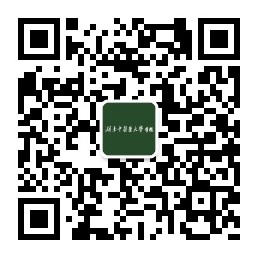| 引用本文: |
夏梦雪, 李建超, 吕艳梅, 徐欢欢, 付世妮, 姚宥佃, 张春, 陈洁.干眼“病-证-体质”及疗效评价研究[J].湖南中医药大学学报,2025,45(6):1094-1099[点击复制] |
|
| |
|
|
| 本文已被:浏览 1002次 下载 2725次 |
| 干眼“病-证-体质”及疗效评价研究 |
| 夏梦雪,李建超,吕艳梅,徐欢欢,付世妮,姚宥佃,张春,陈洁 |
| (陕西中医药大学第五临床医学院, 陕西 西安 710000;西安市中医医院, 陕西 西安 710000) |
| 摘要: |
| 目的 探讨干眼患者“病-证-体质”动态关联及中医药疗效评价。方法 采用回顾性研究设计,纳入单中心干眼患者群体,通过观察中医证候分型、中医体质、临床检测指标(泪膜破裂时间、泪液分泌试验、角膜荧光素染色、总有效率)及中医症状,运用统计学方法分析“病-证-体质”间的关联特征,比较中西医结合治疗与单纯西医治疗的主客观指标改善差异。结果 中医证型以邪热留恋证、气阴两虚证为主,分别为140例(47.14%)、83例(27.95%);体质以阴虚质、气郁质多见,分别为107例(36.03%)、54例(18.18%)。体质类型与证型存在强关联(P<0.05)。观察组和对照组的一般资料比较无统计学意义(P>0.05),观察组在泪液分泌试验、泪膜破裂时间、角膜荧光素染色、总有效率指标的改善程度及中医症状改善方面均优于对照组(P<0.05)。结论 干眼辨证需结合体质、证型等制定精准干预策略,体现中医“病-证-体质”结合的辨证优势;临床上推广中西医结合治疗模式,以提升疗效。 |
| 关键词: 干眼 “病-证-体质”关联 真实世界研究 个体化诊疗 中西医结合治疗 |
| DOI:10.3969/j.issn.1674-070X.2025.06.016 |
| 投稿时间:2025-04-11 |
| 基金项目:陕西省中医药真实世界研究干眼分中心建设项目。 |
|
| Real-world-based study on "disease-pattern-body constitution" and therapeutic efficacy evaluation in dry eye disease |
| XIA Mengxue, LI Jianchao, LYU Yanmei, XU Huanhuan, FU Shini, YAO Youdian, ZHANG Chun, CHEN Jie |
| (The Fifth Clinical Medical College of Shaanxi University of Chinese Medicine, Xi'an, Shaanxi 710000, China;Xi'an Hospital of Traditional Chinese Medicine, Xi'an, Shaanxi 710000, China) |
| Abstract: |
| Objective To explore the dynamic correlations among "disease-pattern-body constitution" in patients with dry eye disease (DED) and evaluate the therapeutic efficacy of Chinese medicines.Methods A prospective cross-sectional study was conducted, DED patients meeting the inclusion criteria from a single center were enrolled. The TCM pattern identification, TCM body constitution classification, clinical test indicators [tear film break-up time (BUT), Schirmer test (SIT), corneal fluorescein staining, etc.], and TCM pattern scores were systematically evaluated. Statistical Methods were used to analyze the correlation characteristics among "disease-pattern-body constitution" and to compare improvements in subjective and Objective indicators between integrated Chinese and western medicine treatment and western medicine treatment alone.Results The predominant TCM patterns were mainly persistent pathogenic heat (140 cases, 47.14%) and dual deficiency of qi and yin (83 cases, 27.95%), while yin deficiency (107 cases, 36.03%) and qi stagnation (54 cases, 18.18%) were the most frequent constitutional types. There was a strong correlation between constitutional types and patterns (P<0.05). No significant difference in baseline characteristics were found between the observation group and the control group (P>0.05). The observation group showed superior improvements in BUT, SIT, corneal fluorescein staining scores and other indicators as well as TCM symptom severity compared with the control group (P<0.05).Conclusion Dry eye management requires precision intervention strategies integrating constitutional and pattern-based differentiation, reflecting the holistic advantage of TCM's "disease-pattern-body constitution". Clinically, the integrated Chinese and western medicine treatment mode should be promoted to enhance therapeutic efficacy. |
| Key words: dry eye disease "disease-pattern-body constitution" correlation real-world-based study personalized treatment integrated Chinese and western medicine treatment |
|

二维码(扫一下试试看!) |
|
|
|
|




